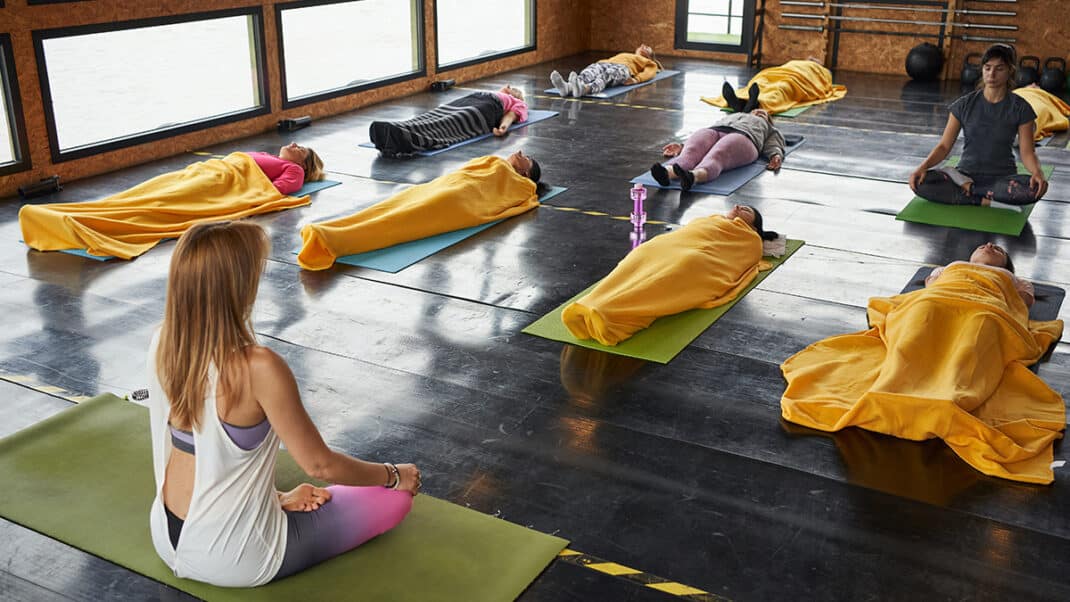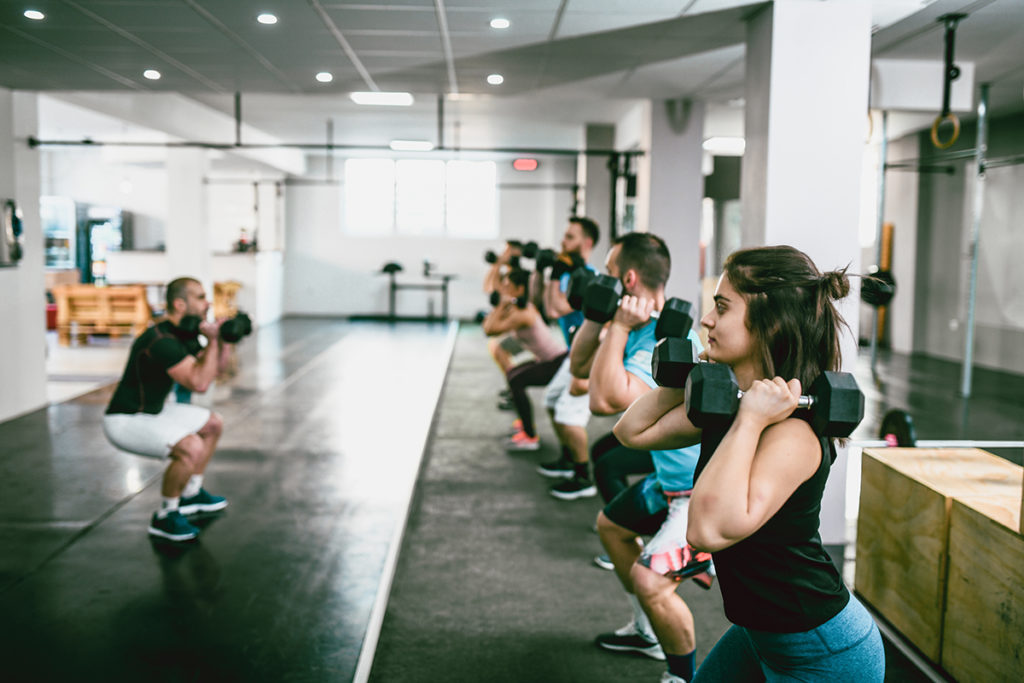A Career Path for Pilates Instructors in 2025
What you need to know to get started

Pilates has become one of the most dynamic and fastest-growing sectors in the U.S. fitness industry. Once considered a niche practice, it is now a mainstream activity embraced for its versatility, accessibility, and health benefits. With participation steadily climbing into the millions, Pilates is no longer confined to boutique studios or rehabilitation centers. Instead, it has expanded into fitness clubs, wellness programs, and even digital platforms. This growth has created a wealth of career opportunities for instructors while shaping an evolving market that combines tradition with innovation.
Pilates Participation in the U.S.
Pilates participation has increased dramatically over the last decade, with more than 12 million Americans practicing regularly. The discipline appeals to a wide demographic, particularly adults in their 30s, 40s, and 50s who value its focus on core strength, flexibility, and mindful movement. Although the practice has historically attracted more women than men, recent trends suggest a growing male audience, particularly athletes and professionals seeking injury prevention and improved performance.
This rise in popularity has placed Pilates at the forefront of group fitness trends. Health clubs and studios report consistent growth in Pilates programming, often pairing it with complementary modalities like yoga or strength training. The method’s adaptability to all levels and ages makes it a valuable addition to any fitness portfolio, ensuring that demand for qualified instructors remains high.
Career Options for Pilates Instructors
Pilates instructors today can pursue careers in a wide range of environments. These include large health clubs, privately owned studios, community recreation centers, spas, schools, and rehabilitation clinics. The breadth of settings provides flexibility for instructors to specialize or diversify based on their skills and professional interests.
Many instructors combine private and group instruction to broaden their opportunities and income potential. Group sessions often focus on structured class sequences, while private sessions allow for personalized programming. This dual approach not only expands career options but also meets the growing expectation from facilities that instructors be proficient in both teaching formats.
Essential Teaching Skills: Group vs. Private
Teaching Pilates successfully requires strong interpersonal and technical skills. Group instructors must command a room with energy and enthusiasm while maintaining structure and safety. They are responsible for guiding diverse groups through balanced routines, offering modifications to suit varying skill levels, and fostering a positive environment that encourages consistency. Group instructors thrive when they can inspire participants through motivation and rhythm, creating a collective experience that keeps clients coming back.
Private instructors, by contrast, focus on individualized progress. They listen closely to client goals, assess movement patterns, and design customized programs to improve strength, mobility, and overall wellness. These sessions often demand patience and adaptability as clients may present with injuries, special conditions, or unique performance goals. Successful private instructors demonstrate empathy, accountability, and the ability to build long-term client relationships that promote retention and loyalty.
Earnings and Compensation Trends
The earnings of Pilates instructors vary widely depending on location, specialization, and employment structure. National averages place instructor pay between $30 and $40 per hour, with some earning significantly more in high-demand markets or in specialized roles such as athletic performance or rehabilitation training. Urban areas like New York and San Francisco often offer higher hourly rates, while smaller cities and nonprofit facilities may pay less.
Annual income can also vary by format. Instructors working full-time in private settings often report higher earnings compared with those teaching group classes at gyms. Adding specialty certifications such as pre and postnatal training or orthopedic-focused Pilates can further increase compensation by 15 to 20 percent. Instructors who diversify with online coaching or content creation may expand their earning potential even more.
Payscale (2025): Average pay is $35.61/hr (median), with a range from about $20.90 to $62.20/hr.
Salary.com reports an average hourly rate of $32/hr, translating to around $67,410/year, with variations across experience levels and states.
ZipRecruiter and Breathe Education cite $33.86/hr (~$70,426/year), with most instructors earning between $23–$65/hr and possibilities for six‑figure incomes in high-end private or niche work.
Glassdoor data shows a higher mean: about $40/hr or $82,600/year, with top earners reaching up to $149,500/year.
Indeed similarly reports an average of $40/hr, with regional differences—e.g. instructors earning up to $49/hr in NYC
Training and Certification
Certification is an essential step for anyone pursuing a career in Pilates instruction. Today’s training programs typically include between 200 and 500 hours of coursework, observation, and supervised teaching. Mat-only certifications can be earned in as little as 40 to 50 hours, but full programs covering equipment training are considered the gold standard. These programs ensure instructors are well-prepared to teach safely and effectively in a variety of settings.
Training prerequisites often include a solid personal practice in Pilates and a basic understanding of anatomy and movement science. Many programs also require or recommend prior certifications in personal training or group exercise. Specialty certifications in areas such as rehabilitation, athletic performance, or cancer recovery allow instructors to further distinguish themselves in a competitive marketplace.
Training Investment: Time and Cost
Becoming a certified Pilates instructor requires both time and financial investment. Comprehensive training programs typically cost between $2,500 and $10,000 depending on the scope of the curriculum. Additional expenses may include testing fees, continuing education credits, and travel if courses are not available locally. Workshops that focus on specialty tracks such as scoliosis management or athletic conditioning are more affordable but add to long-term professional development costs.
In terms of time, instructors should expect to commit several months to a year to complete full certification. Beyond the classroom, practice teaching and observation hours play an essential role in developing confidence and expertise. While the commitment is substantial, the investment pays dividends in career stability, earning potential, and professional credibility.
Comprehensive instructor certification typically entails:
- 40–50 hours for mat-only credentialing.
- 200–500 hours for full mat plus equipment requisites.
- Costs vary widely: $2,500–$10,000 for full certification, depending on program scope and equipment training included
Pilates Studio Market and Career Outlook
The Pilates and yoga studio market in the United States is valued at more than $14 billion and continues to expand steadily. The number of studios has grown by thousands in recent years, with California, New York, and Texas leading in concentration. Independent studios remain popular, but hybrid fitness models that combine in-person and virtual classes are also on the rise.
For instructors, the career outlook remains highly positive. Demand for qualified teachers is strong across both boutique studios and larger fitness centers. Many instructors supplement teaching with related opportunities such as opening their own studios, mentoring new teachers, presenting at conferences, or writing for industry publications. As Pilates becomes more deeply integrated into healthcare, rehabilitation, and sports performance, instructors with specialized training will find even greater opportunities.
Pilates Studio Market & Career Outlook
- The Pilates & Yoga studio industry in the U.S. was estimated at $14.7 billion in revenue (2024), growing at around 1.7% CAGR over five years
- The number of studios rose from roughly 32,350 in 2017 to about 48,550 in 2023—a growth rate of 4.6% annually. California leads the market with over 2,500 studios, followed by New York and Texas.
- Digital alternatives (online classes, apps, social media, YouTube) pose competitive pressure, particularly in post‑COVID environments
Is Pilates Right for You?
| Section | 2025 Highlights |
|---|---|
| Participation Trends | 12.9M in 2024; fastest-growing modality; ~70% women; avg. age ~45 |
| Instructor Earnings | $30–$40/hr average; up to $60+ in specialized/private settings |
| Training & Certification | 200–500 hrs; $2.5K–$10K investment for full training |
| Specialty Tracks | Pre-/postnatal, rehab, athletes – enhance earnings by ~15–20% |
| Market & Studio Landscape | $14.7B industry; ~48.5K studios; hybrid/online presence rising |
| Career Opportunities | Teaching, mentoring, studio ownership, writing, digital coaching |
Pilates has transitioned from a specialized practice into a mainstream pillar of the fitness industry. With millions of participants nationwide and a robust market for studios and instructors, the opportunities are extensive for those willing to invest in quality training and skill development. Whether teaching group classes, private sessions, or pursuing advanced specialty tracks, Pilates instructors can build rewarding and sustainable careers. For professionals seeking a balance between wellness, education, and entrepreneurship, Pilates offers a pathway that continues to grow in both reach and impact.
References
Bodybar Pilates. (2024). Health and fitness industry statistics: The role of Pilates. Retrieved from https://bodybarpilates.com/blog/health-and-fitness-industry-statistics-the-role-of-pilates/
Glassdoor. (2025). Pilates instructor salaries. Retrieved from https://www.glassdoor.com/Salaries/pilates-instructor-salary-SRCH_KO0%2C18.htm
IBISWorld. (2024). Pilates & yoga studios industry in the US. Retrieved from https://www.ibisworld.com/united-states/industry/pilates-yoga-studios/4185/
Indeed. (2025). Pilates instructor salaries in the United States. Retrieved from https://www.indeed.com/career/pilates-instructor/salaries
Pilates Bestie. (2025). Pilates instructor salary report. Retrieved from https://www.pilatesbestie.com/blog/2025-pilates-instructor-salary/
Pilates Style Magazine. (2023). The growth of Pilates studios in the United States: Look at us grow. Retrieved from https://pilatesstyle.com/news/the-growth-of-pilates-studios-in-the-united-states-look-at-us-grow-pilatesstyle-magazine/
Payscale. (2025). Hourly rate for Pilates instructors. Retrieved from https://www.payscale.com/research/US/Job%3DPilates_Instructor/Hourly_Rate
Salary.com. (2025). Pilates instructor salary. Retrieved from https://www.salary.com/research/salary/position/pilates-instructor-salary
Sports & Fitness Industry Association. (2024). SFIA participation report. Retrieved from https://www.sfia.org
Wikipedia. (2025). Pilates. Retrieved from https://en.wikipedia.org/wiki/Pilates
Women’s Health. (2024). Why Pilates is the fastest-growing fitness class in America. Retrieved from https://www.womenshealthmag.com/fitness/a65783465/pilates-fastest-growing-fitness-class/





